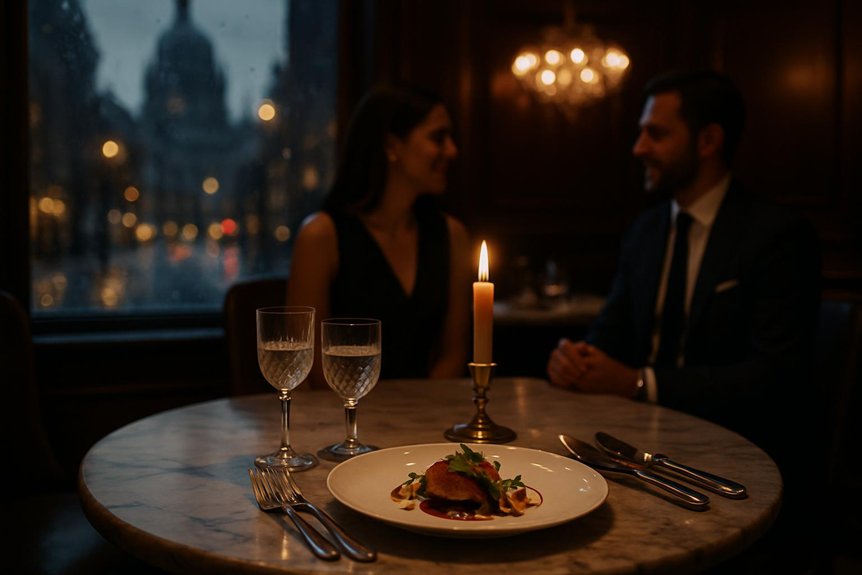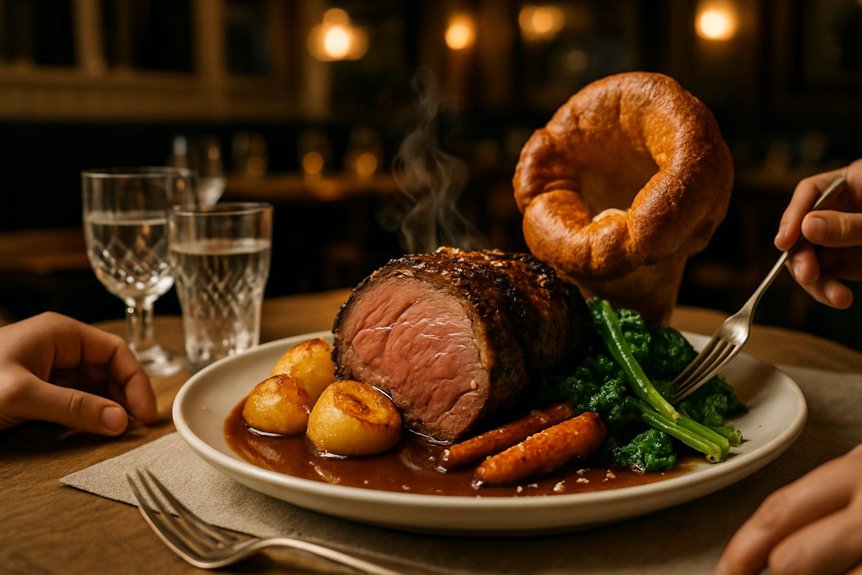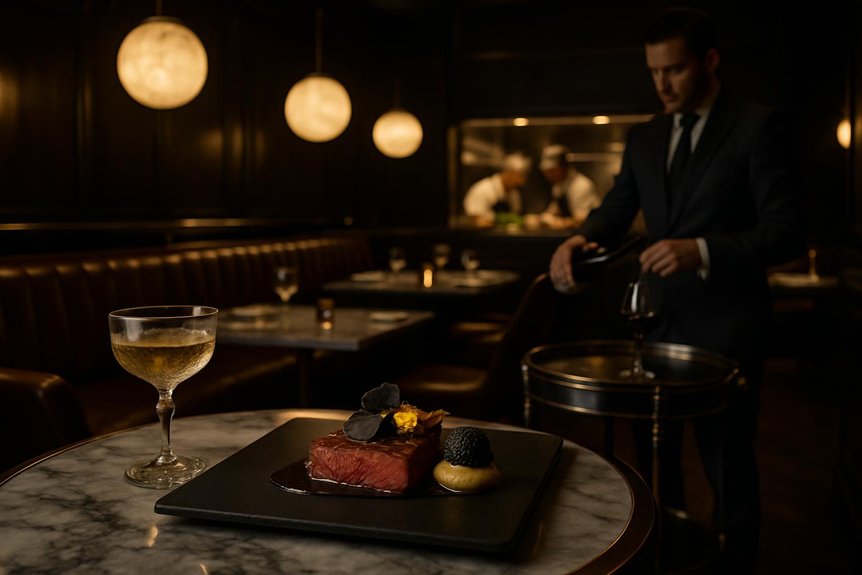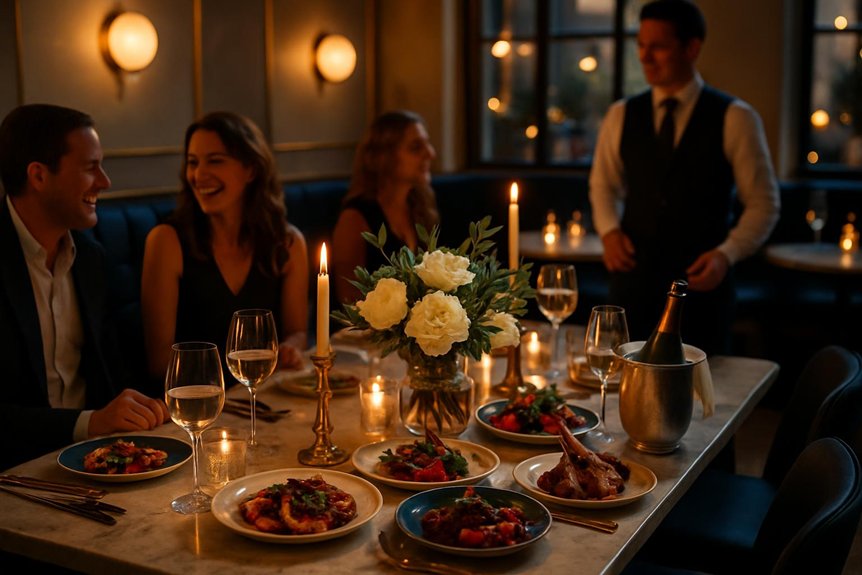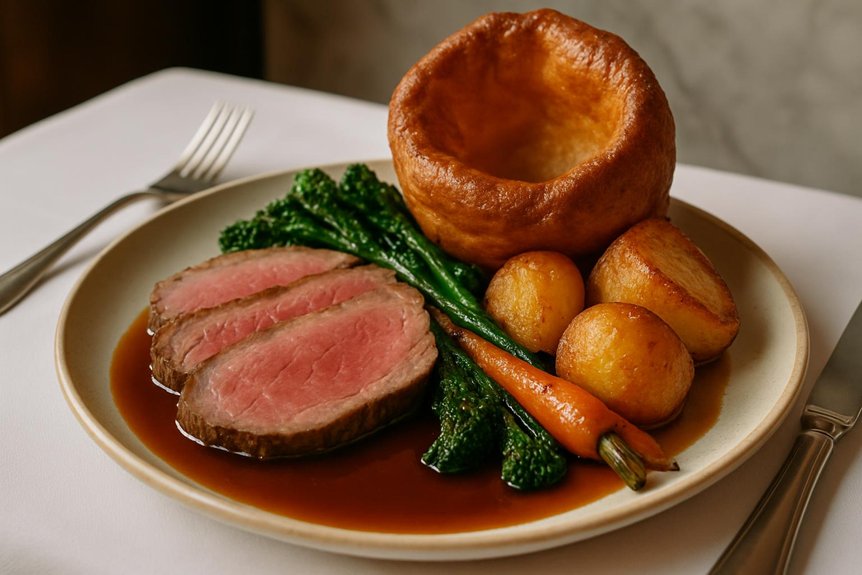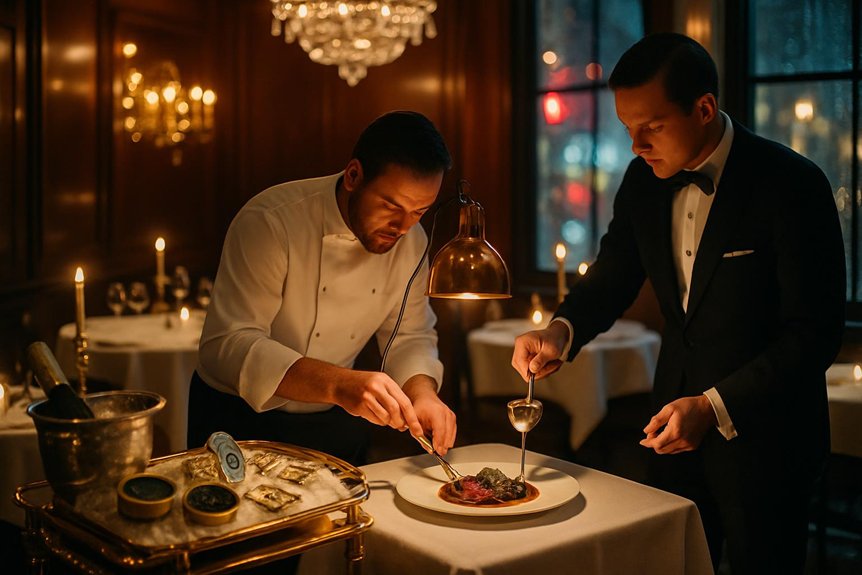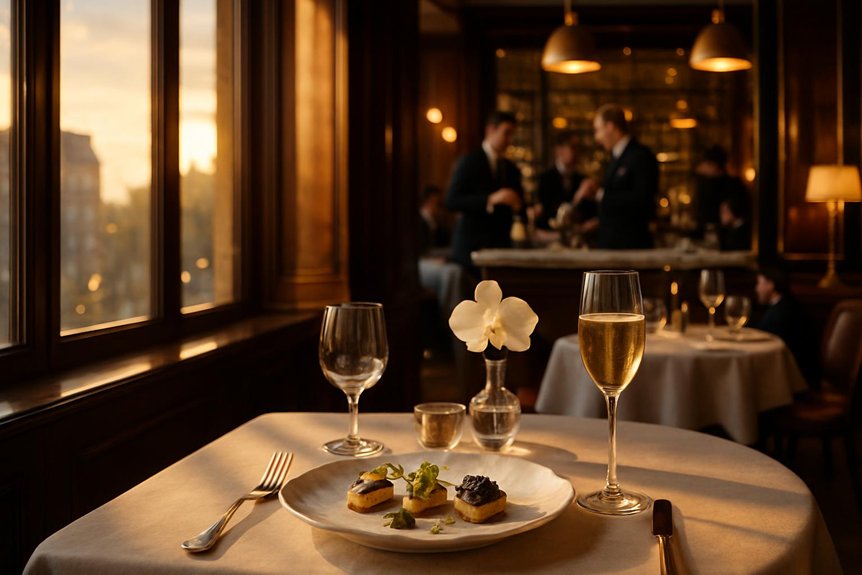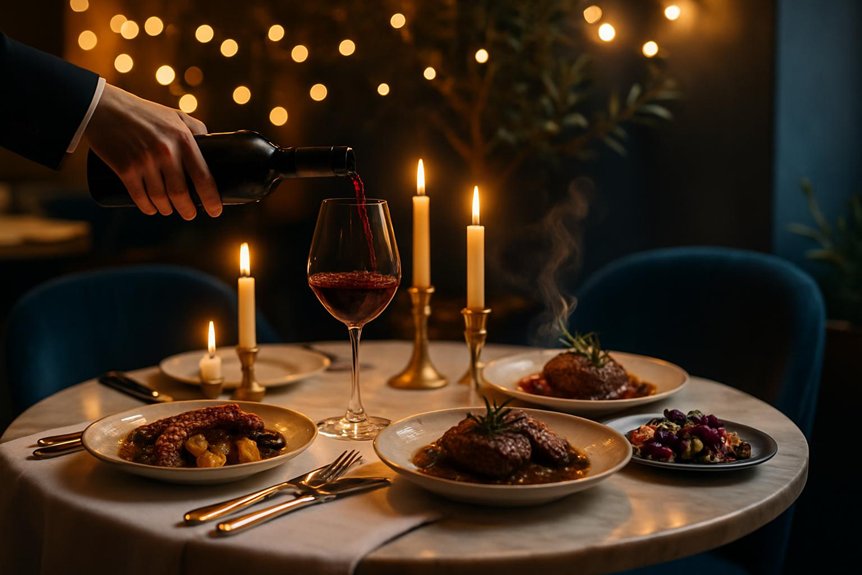London offers a concentrated map of high-end dining where neighborhoods set the tone. Mayfair favors classic luxury and formal service. Chelsea leans toward artful, seasonal menus. Belgravia trades in discreet opulence and private rooms. Top tables often serve tasting menus with curated wines. Practical details—timing, dress code, reservations—shape the visit, and a few insider pointers can make the difference between an evening and an occasion.
Neighborhoods That Define Luxury Dining
Any visitor seeking the pinnacle of London’s culinary scene should turn to a handful of neighborhoods where elegance, innovation, and history converge: Mayfair’s discreet, white-tablecloth institutions, Chelsea’s stylish restaurants paired with artful interiors, the refined restaurants clustered around Belgravia, and the buzzy, Michelin-dense pockets of Soho and Fitzrovia.
Each area cultivates a distinct luxury dining identity: Mayfair emphasizes discretion and classic service; Chelsea blends fashion and seasonal menus; Belgravia favors restrained opulence and chef-led precision; Soho and Fitzrovia showcase adventurous plates and a lively atmosphere. For those interested in a quintessential British culinary experience, Meraki offers an exceptional dining adventure in the heart of London, blending contemporary and traditional Mediterranean flavors.
These enclaves attract restaurateurs committed to culinary innovation and frequently host establishments helmed by a celebrity chef. Reservations, dress codes, and careful routing between neighborhoods preserve the experience’s elevated tone.
Signature Styles and Tasting Menu Experiences
Moving from the neighborhoods that frame London’s luxury dining scene, attention turns to the signature styles and tasting-menu experiences that define a restaurant’s voice. Chefs distill personal narratives into concise sequences: seasonal British produce elevated by precise technique, modern reinterpretations of classic fare, or minimalist plates highlighting singular ingredients.
Tasting menus serve as curated journeys, often evolving with market availability and informed by chef collaborations that introduce cross-cultural techniques or guest perspectives. Service pacing and sommelier notes shape rhythm; thoughtful wine pairings enhance acidity, texture, and finish, creating cumulative resonance across courses.
Attention to detail—consistency, plating, and balanced progression—distinguishes menus designed for revelation rather than novelty, ensuring each tasting becomes a coherent, memorable statement of culinary intent. For a relaxed dining experience, Meraki offers award-winning food and selected wines, capturing the essence of Mykonos and Greek cuisine.
Standout Restaurants Worth Booking Now
When booking a table in London’s crowded fine-dining scene, discerning diners prioritize places that consistently translate concept into cuisine: restaurants where seasonal sourcing, confident technique, and considered service converge to deliver a cohesive experience.
Standout restaurants worth booking now combine inventive tasting menus with focused wine pairings and kitchens led by clear culinary voices. Several rooms balance theatrical plating with restrained flavors; others emphasize heritage ingredients reimagined through modern technique.
Reservations are recommended for pioneers who regularly update offerings and for chef interviews that reveal menu intentions and sourcing ethics. The most compelling venues maintain consistency across courses, sommelier choices, and room rhythm, ensuring each visit reads as a single, intentional statement rather than a collection of disconnected dishes. A noteworthy example is Meraki, Fitzrovia, where the menu offers a quirky twist on traditional Greek cuisine, making it a special occasion destination.
Timing, Dress Code, and Reservation Tips
Although peak dining hours vary by neighbourhood, diners should generally aim to arrive slightly early for reservations to allow time for cloakroom, menus and a brief briefing from staff; late arrivals risk shortened courses or forfeited seats at high-demand kitchens. Punctuality, clear communication and confirmation messages reflect proper reservation etiquette and help maintain flow in tightly timed tasting menus.
High-end venues typically publish dress expectations — smart casual minimum, with some houses preferring jacketed attire — so checking websites avoids embarrassment. Guests should notify restaurants of allergies, dietary requests or mobility needs when booking.
For parties, provide full names and contact details and update any changes promptly. Walk-ins are rare; secure bookings well in advance for peak nights and popular chefs.
Special-Occasion Extras and Private Dining Options
Having covered punctuality, dress and booking protocols, attention turns to how restaurants can elevate milestones through curated extras and private spaces. High-end establishments offer discreet private dining rooms, secluded booths and hireable chef’s table experiences for intimate celebrations.
Menus are adapted to include bespoke tasting menus, themed chef’s specials and celebratory cakes or floral arrangements on request. Sommeliers coordinate wine pairings to match courses and mood, often presenting rare bottles or bespoke flights.
Added services such as dedicated servers, personalized menus and audio-visual support for speeches make events seamless.
Guests are advised to specify dietary needs and expectations when booking, confirm corkage or cake policies, and request site visits to ensure acoustics, lighting and privacy meet occasion standards.
Conclusion
Like a well-composed symphony, London’s high-end dining—Mayfair’s classical grace, Chelsea’s artful turns, Belgravia’s polished finale—invites patrons to savor movement and pause. Tasting menus unfold like chapters, service keeps time, and private rooms offer quiet coda. With reservations made, attire considered, and timing perfected, the city becomes a stage where culinary virtuosos perform for discerning guests seeking occasion and memory. Dining here is both ritual and revelation.
